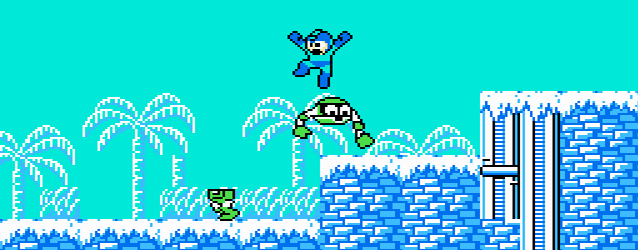
Readers with good memories will remember that I’ve mentioned Jeremy Parish’s excellent “Anatomy of a Game” series before, and well-read readers with good taste will already know about it. For the rest of you, I’m talking about a set of analyses of games in which the level design, mechanics and direction inform gameplay and teach the player in a time before tutorials. Not some weird fanfiction about the actual, you know, anatomy of the little guy himself.
Parish’s latest run is on the original Megaman and I’m mentioning it here because he raises a very interesting point, one that I’d never considered before.
In the Before Days, there were no tutorials. You started, you played. If you were lucky the game came with a manual that told you what the controls were. It was up to you to determine what that meant and how it applied in-game. Bear in mind that entire genres were being invented here so the designers absolutely couldn’t rely on player familiarity. So we had Super Mario Bros’ infamously designed opening level, Metroid’s superb use of level structure to introduce each new power up, and so on. Little things like Samus starting the game facing towards the camera rather than the traditional right, hinting to the player that this wasn’t a left-to-right scroller. Like Donkey Kong’s placement of that first flaming barrel to force players to advance upwards. Like the way Legend of Zelda gives you no guidance and starts you near – but not at – the cave containing the game’s first weapon.
Megaman though is different:
Mega Man was pretty unique in its time for the way it let you start on any one of six stages. There is no single “right” order in which to play Mega Man, though certainly some sequences prove to be more advantageous than others. But because you can go about jumping into this game however you like, each of the six Robot Master stages essentially has to work as the game’s first level. In other words, each has to convey the purpose and mechanics of the adventure.
Not even a single mandatory level before opening the game up. No, each level not only had to teach you the elements unique to that level but also to teach you the game itself. Of course it gives you a fair start by having the default selection be one of the easier choices – not the best, but one of them – but even so… The fact that the level designers managed to not only lead the player into the game once but six times is an achievement not to be understated.
I’d always had a lot of respect for the creators of Megaman, but after having that pointed out they jumped a good few notches further in my estimation.
» Anatomy of Games by Jeremy Parish. Go read.
